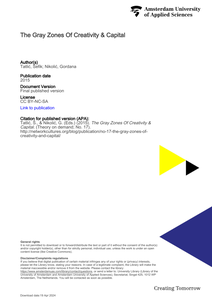Nature in cities serves a multitude of purposes, one of which is that it provides citizens opportunities to recover from stressful daily urban life. Such stress recovering effects of nature can be experienced through urban green, which in urban planning and design contexts can be divided into large natural areas - urban green space - and small scale elements in urban streets: the urban greenscape. The current study aims at finding the extent to which various small scale natural elements in residential streets and their possible configurations influence citizens' preferences for those streets. The research was conducted through an online survey in four cities in the Netherlands (n = 4,956). It used stated choice methods in a virtual environment street design. The method yielded high quality data, indicating that the use of virtual environments and imagery is suitable for stated choice research in the built environment. The results show that especially trees very strongly influence preference, indicating they deserve more attention and space in cities. Grass, which is typically favored by local governments, and vertical green have the smallest effects in residential streets. Furthermore, the concept of greenscape intensity is introduced as the intensities of both the element and the configuration were found to be highly relevant. The results clearly show that the higher either of these intensities, the more likely a respondent will prefer the greenscape design. Furthermore, low intensity on the one can be compensated by high intensity on the other. With these results, urban design professionals and local governments can better trade-off the different aspects of costs versus positive effects of urban greenscape designs.
MULTIFILE
About this publication: What is the correlation among the creative industries, creative industry policies, new media paradigms and capitalism as colonial relations of dominance? What is the role of these industries in the prioritization of the interests of capital at the expense of those of society and how can these paradigms be criticized in the context of the actual, neoliberal, flexible regime of reproduction of capital? To what measure is this regime ‘flexible’ and to what measure it is just an extension of rigid, feudal and racial logics that underline (post)modern representational discourses? To what measure do the concepts of creativity, transparency, openness and flexibility conceal the hegemonic nature of modern hierarchies of exploitation?This publication brings together six essays that offer a critique of the relationship between the creative industries and capital. It treats ‘the networked world’ — its democracies, cognitivities, its attention and its paradigmatic cultural discourses — as one of the domains wherein and by which capitalism and its colonial relations of dominance are being reproduced, reorganized, perpetuated and ‘modernized’.The Gray Zones of Creativity and Capital (eds. Gordana Nikolić and Šefik Tatlić) consists of works from a diverse range of authors from around the globe: Jonathan Beller, Josephine Berry Slater, Marc James Léger, Ana Vilenica, Sandi Abram & Irmgard Emmelheinz. The book first appeared in Serbian in 2015.
MULTIFILE

How do global audiences use streaming platforms like YouTube, Netflix and iPlayer? How does the experience of digital video change according to location? What strategies do people use to access out-of-region content? What are the commercial and governmental motivations behind geoblocking?Geoblocking and Global Video Culture explores the cultural implications of access control and circumvention in an age of VPNs. Featuring seventeen chapters from diverse critical positions and locations – including China, Iran, Malaysia, Turkey, Cuba, Brazil, USA, Sweden and Australia.
MULTIFILE
